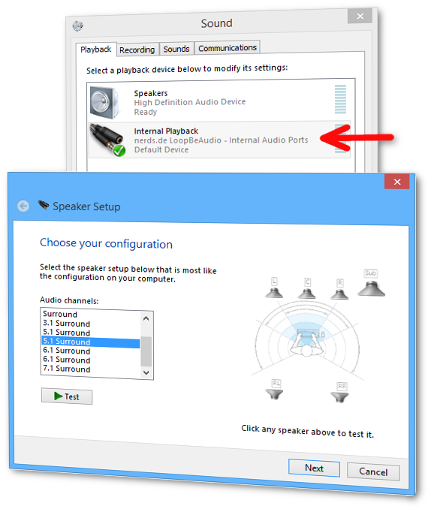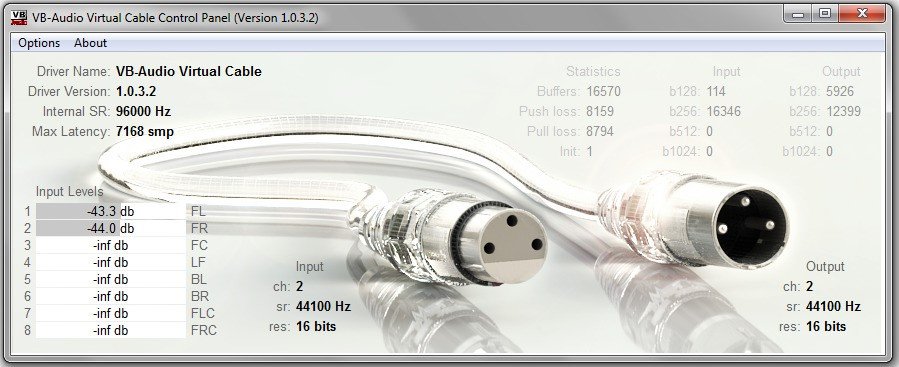

The trial version of LoopBeAudio works for 60 minutes after its first use. Free Evaluation Copyĭownload our free evaluation copy here. It keeps LoopBeAudio's playback and record format in sync, displays details like format, monitor and default device and gives you fast access to the Sound Control Panel. LoopBeAudio's driver comes with a small system tray application. While using LoopBeAudio you can forward the audio data to your "real" audio output, without the need for matching formats A little Status Application in your System Tray. LoopBeAudio lets you configure an audio device with more than 8 channels, but Windows will not provide the speaker positions here, therefore LoopBeAudio will behave like a multichannel Line device Independent Monitoring LoopBeAudio's "Internal Playback" simulates virtual speakers with all possible surround configurations of Windows.Ĭonfigure up to 24 channels with Virtual Line devices Test every Surround Setup with Virtual SpeakersĬonfigure LoopBeAudio with the Windows Sound Control Panel like every other audio device. Programs do not need to link with special libraries, so LoopBeAudio works with every audio-capable Windows application. LoopBeAudio is a native Windows™ WDM kernel mode driver, so expect the lowest possible latency. Build a virtual 7.1 surround device, even though you don't have the built-in hardware. Configure up to 24 audio channels, a sample rate from 8000 Hz to 384000 Hz with a bit depth from 8 bit to 32 bit.

The technical limits are only restricted through the Operating System. LoopBeAudio is a virtual audio device to transfer audio between computer programs, digitally, without any quality loss. The CopyFrom function copies sample data from the DMA buffer.ĭestination - Points to the destination buffer.LoopBeAudio A Virtual Audio Cable - An Audio Loopback Driver STDMETHODIMP_(void) CMiniportWaveCyclicStream::CopyFrom( I expect valuable suggessions/codes about this code,also specify what is wrong with this code? -Thanks in advance.Ĭode: //=


The code is working but output have clicking and crakling sounds along with music. Here I'm writing the audio looping part of the code. I don't know how to implement CopyTo and CopyFrom functions to make a VALC such that any audio data apears at the input port of VALC (Virtual Audio Device) is available at the output port of VALC (similar to Virtual Audio Cable v4.13).Please help me to codeĬopyTo and CopyFrom functions? Shortly I got a source code of an Audio Loopback Driver whose functions similar to VALC. I am going to make a Virtual Audio Loopback Cable/Pipeline(a Virtual Audio Device).MSVAD source code getting along with WDK only perform capture and save audio data which apears at the input port of the device,


 0 kommentar(er)
0 kommentar(er)
